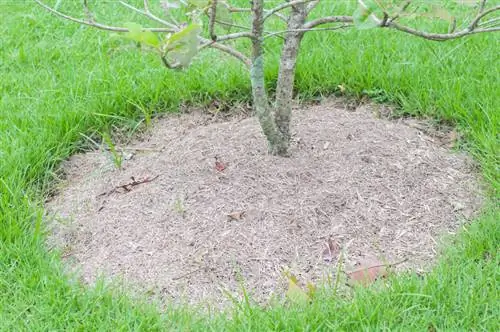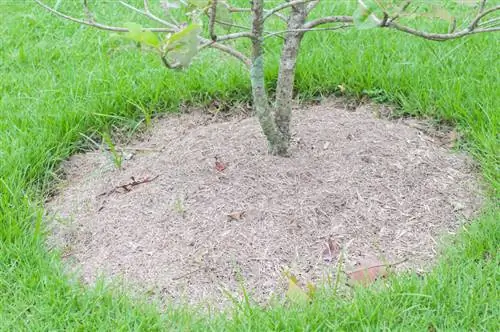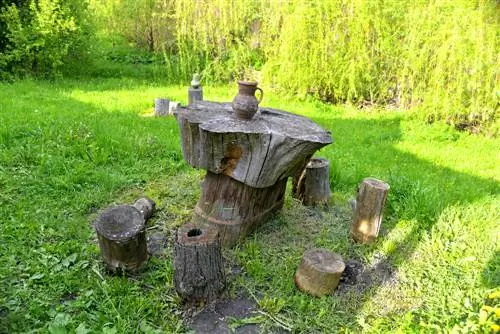- Author admin [email protected].
- Public 2023-12-16 16:46.
- Last modified 2025-01-23 11:22.
A magnolia tree usually only blooms beautifully and lushly when its roots are he althy. Read what you should consider when planting and caring for magnolia roots.

How deep do magnolias have roots and how do you care for them properly?
Magnolia roots are shallow and spread out in a plate shape directly beneath the surface of the earth. They require heavy, humus-rich soil and should be protected in winter. Older magnolias can be transplanted carefully, possibly with root pruning and above-ground pruning.
Flat-rooted magnolia
The magnolia is a shallow-rooted plant. The plant spreads its roots in a plate shape and flat below the surface, although, typical of shallow-rooted plants, no deep taproot is formed. However, just below the surface of the earth does not mean that the magnolia roots only reach a few centimeters deep. Depending on the nature of the soil and age, the magnolia can stretch to a depth of one to one and a half meters, some specimens even deeper. Furthermore, magnolias do not form a real root ball; instead, it falls apart quite quickly, for example when digging up.
Protecting magnolia roots in winter
Due to the fact that the magnolia has broad roots just below the surface of the earth, the roots are at great risk from frost in the cold season - even in varieties that are actually hardy. Magnolias are not hardy as a whole, only some parts of the plant are hardy, while others need to be protected from the cold. In autumn, magnolia roots receive a thick protective layer of bark mulch (€13.00 on Amazon), leaves and brushwood. For the same reason, good winter protection is extremely important, especially for potted magnolias.
Transplanting magnolia - if you cut roots, cut above ground
Sometimes it may be necessary to transplant an older, well-established magnolia. Be it because the current location has become too small or because another place needs to be found due to the garden being redesigned. In principle, older magnolias can also be transplanted, although it is best to dig up the roots over a large area. Try to injure them as little as possible. Sometimes, however, a root pruning becomes necessary, for example because some roots have been torn or torn. In such a case, you should also prune the tree above the ground, as the remaining roots can no longer fully meet the additional effort required to care for the magnolia. If you're unlucky, the tree will dry out afterwards.
Tips & Tricks
Magnolia roots need quite heavy, humus-rich soil that is still loose enough to be easily rooted. On the other hand, on soil that is too loose (e.g. sandy), the plant finds insufficient support, which can cause problems, especially in strong winds or storms.






